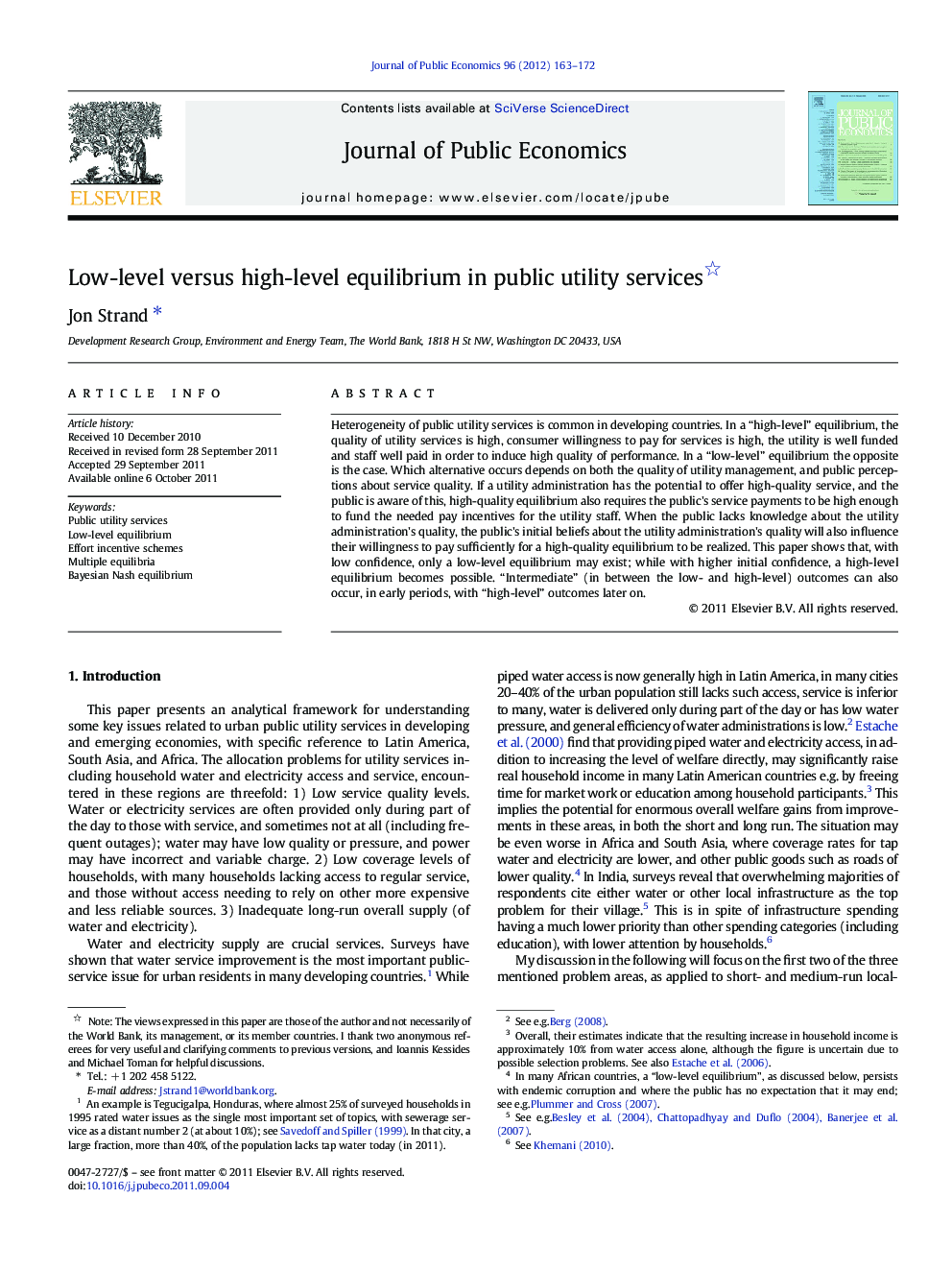| Article ID | Journal | Published Year | Pages | File Type |
|---|---|---|---|---|
| 969258 | Journal of Public Economics | 2012 | 10 Pages |
Heterogeneity of public utility services is common in developing countries. In a “high-level” equilibrium, the quality of utility services is high, consumer willingness to pay for services is high, the utility is well funded and staff well paid in order to induce high quality of performance. In a “low-level” equilibrium the opposite is the case. Which alternative occurs depends on both the quality of utility management, and public perceptions about service quality. If a utility administration has the potential to offer high-quality service, and the public is aware of this, high-quality equilibrium also requires the public's service payments to be high enough to fund the needed pay incentives for the utility staff. When the public lacks knowledge about the utility administration's quality, the public's initial beliefs about the utility administration's quality will also influence their willingness to pay sufficiently for a high-quality equilibrium to be realized. This paper shows that, with low confidence, only a low-level equilibrium may exist; while with higher initial confidence, a high-level equilibrium becomes possible. “Intermediate” (in between the low- and high-level) outcomes can also occur, in early periods, with “high-level” outcomes later on.
► Water and power markets can get “stuck” in a situation with low prices and service quality. ► Lack of willingness to pay for services can perpetuate a low-level situation. ► Asymmetric information about the utility's type can lead to multiple equilibria for given economic fundamentals. ► Greater “optimism” can lead to an escape from the low-level equilibrium.
